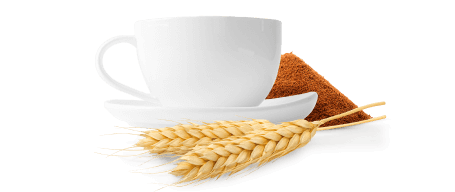
The essence obtained from cereals and chicory was considered an independent group of drinks, but most often its consumption was due to the need to supply a substitute, the so-called surrogate, of natural coffee. This was the case at times of limited access to food products; for example, during World War I and World War II.
Such reasons for the consumption of chicory and cereal beverages also appeared in the 1970s, when the price of natural coffee on the world markets surged.


Roasted plant ingredients
The roasted plant ingredients from which beverages of this kind have been and continue to be produced, have a fascinating history developed in various parts of the world.
In the 16th century, when coffee was first introduced to Europe, it was compared to a beverage known before, one brewed from chicory root. Then, beverages made of barley and rye appeared. Sources from the 19th century state that over 40 ingredients were used to brew coffee substitutes, while other documents describe over 100 such plants.
Plant-based beverage additives, such as molasses or juices from sweet plants often in the form of concentrates, have been used since the end of the 18th century. Such ingredients modified the colour of the beverages or added bitterness or sweetness.





